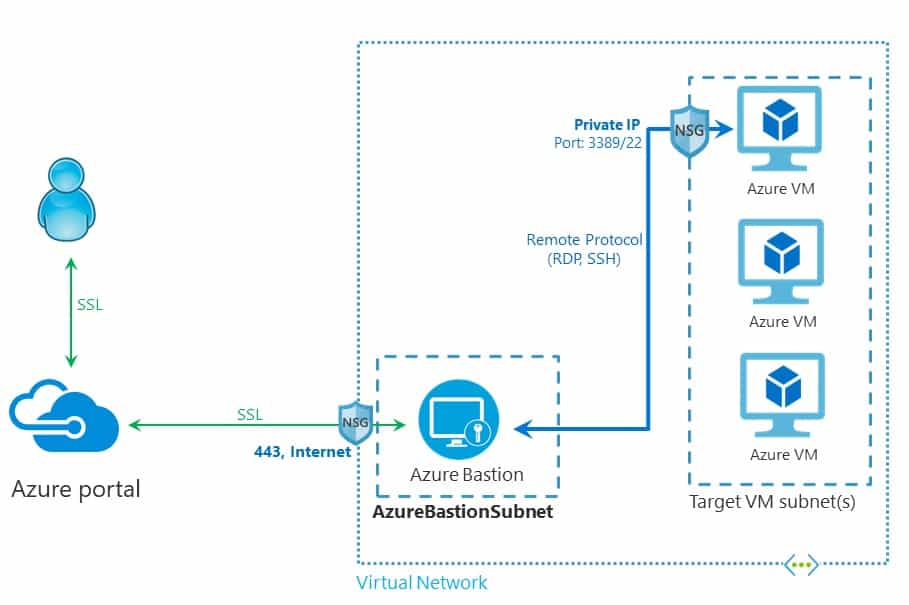

#Azure bastion rdp how to
To learn about how to best configure NSGs with Azure Bastion, see Working with NSG access and Azure Bastion. To connect to a Windows VM using native client support, you must have the following ports open on your Windows VM: Inbound port: Custom value (you’ll then need to specify this custom port when you connect to the VM via Azure Bastion).To connect to a Linux VM using native client support, you must have the following ports open on your Linux VM: You only need to do this if you're enabling Azure AD login using the processes outlined in one of these articles: Virtual Machine Administrator Login or Virtual Machine User Login role, if you’re using the Azure AD sign-in method. Reader role on the Azure Bastion resource. Reader role on the NIC with private IP of the virtual machine. Verify that the following roles and ports are configured in order to connect to the VM. Configure your Windows VM to be hybrid Azure AD-joined.Configure your Windows VM to be Azure AD-joined.Enable Azure AD sign-in for a Windows VM or Linux VM.If you plan to sign in to your virtual machine using your Azure AD credentials, make sure your virtual machine is set up using one of the following methods:.Copy the Resource ID at the top of the page to your clipboard to use later when connecting to your VM. Go to the Overview page for your VM and select the JSON View link to open the Resource JSON. The Resource ID can be easily located in the Azure portal. A virtual machine in the virtual network.For steps, see Configure Bastion for native client connections. Azure Bastion is already deployed and configured for your virtual network.
#Azure bastion rdp install
For information about installing the CLI commands, see Install the Azure CLI and Get Started with Azure CLI.
#Azure bastion rdp update
You can update your CLI for Bastion using az extension update -name bastion. The latest version of the CLI commands (version 2.32 or later) is installed.



 0 kommentar(er)
0 kommentar(er)
